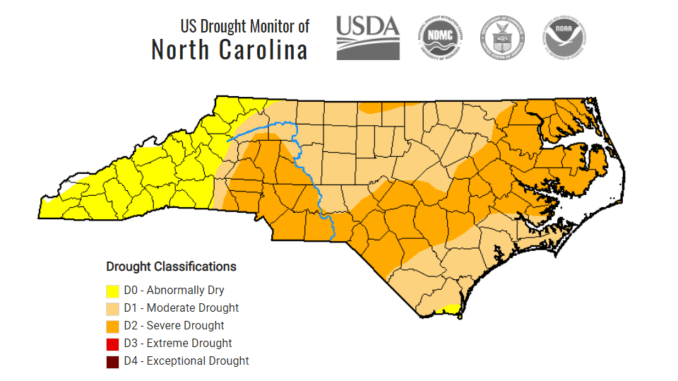Outer Banks, northeast N.C. remain in severe drought despite recent rainfall
 Despite recent rainfall that allowed an open burning ban to be lifted, the Outer Banks and all of northeastern North Carolina remains in severe drought conditions.
Despite recent rainfall that allowed an open burning ban to be lifted, the Outer Banks and all of northeastern North Carolina remains in severe drought conditions.
Thursday’s update from the N.C. Drought Monitor showed no significant changes for the northern coastal areas of the state, but the southern coast moved back into the moderate drought category.
Rainfall last Wednesday and Saturday was welcome, but most areas need much more to make a dent in the drought, as recovery for streams and soils was brief and minimal, according to state climatologists.
North Carolina experienced its driest November in nearly a century last month, and rainfall deficits have been experienced across much of the state since early September.
Dryness is building most rapidly in the west, which had below-normal rainfall last week, and a frontal passage this weekend should bring light rain with totals of around a quarter-inch possible.
Another system on Wednesday may pass by offshore, but rain is possible at the southern coast.
Severe drought is the second category of the four drought classifications based on the U.S. Drought Monitor. Last May, portions of six counties were briefly classified as severe. Prior to that time, severe drought occurred during the month of October 2019.
In past droughts, areas on the mainland that include several wildlife refuges have been prone to wildfires that have burned the nutrient-rich peat soils for months.
In the spring of 2016, the Whipping Creek Fire burned over 15,000 acres in Alligator River National Wildlife Refuge in mainland Dare and Hyde counties and the Dare Bombing Range.
While the summer of 2016 was wetter than normal, helping ease drought conditions somewhat, it took Hurricane Matthew in October to finally bust that drought with its record-setting rainfall and flooding.
Another serious drought year was in 2011, when the Pains Bay Fire burned over 45,000 acres of the refuge and bombing range while threatening to spread into the village of Stumpy Point.
That fire smoldered in the peat soils for months until rains from Hurricane Irene at the end of August finally put it out.
Both of those fires created smoke plumes visible from more than 100 miles away, and would blanket the Outer Banks with a thick, acrid haze for days when the winds blew the right direction.
While the Pains Bay fire started from a lightning strike, the Whipping Creek fire was blamed on a manmade source when sparks from a mower working along U.S. 264 started a grass fire on the road shoulder that quickly spread.












